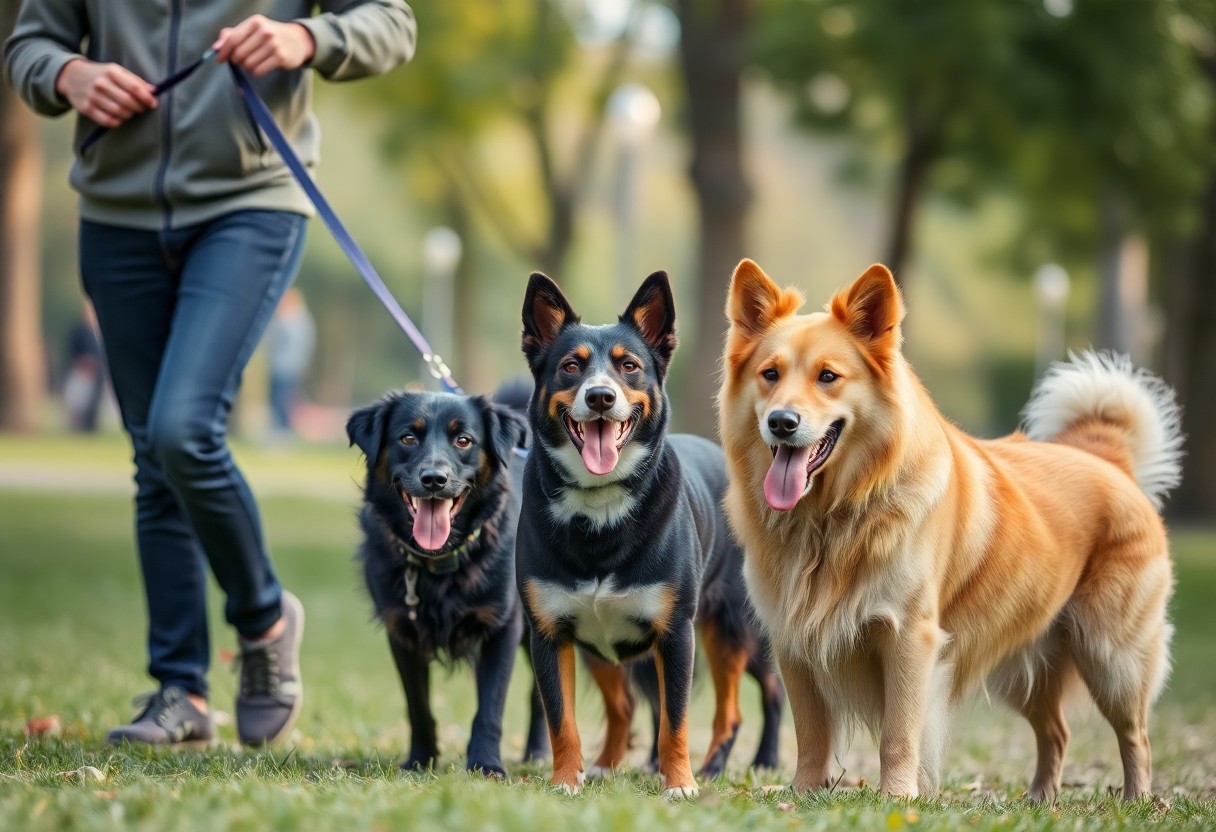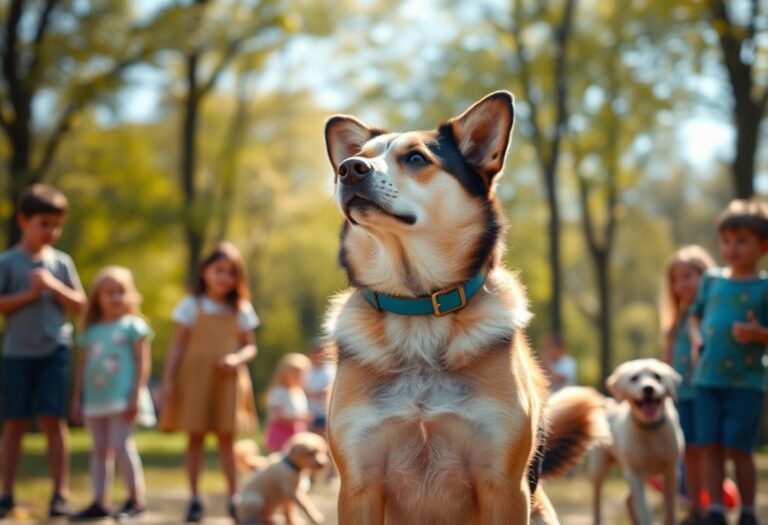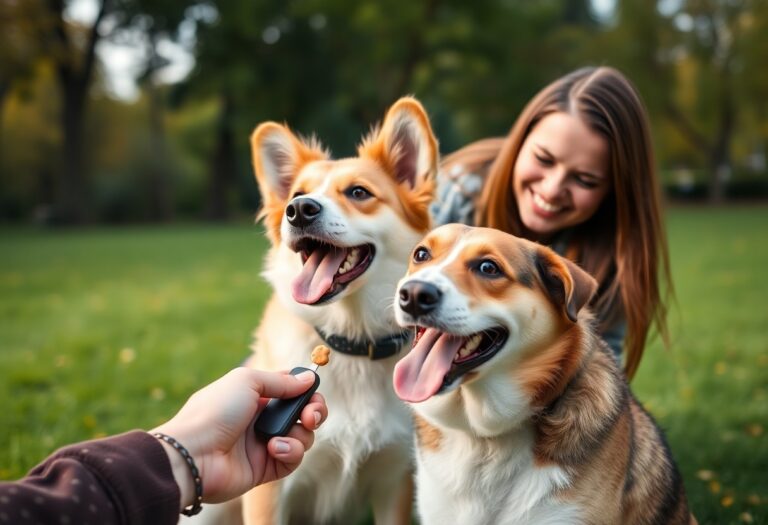Training your dog to walk calmly on a leash is important for both safety and enjoyment during your outings. With just one week of dedication and consistency, you can transform your walks into a positive experience for both you and your furry friend. By using effective techniques, you’ll minimize risky behaviors such as pulling, lunging, or barking at other dogs or distractions. This week-long guide will equip you with the necessary skills to achieve a well-behaved companion on leash, enhancing your bond while ensuring your dog’s safety in public spaces.
The Psychology of Leash Training: How Understanding Your Dog’s Behavior Shapes Success
Canine Instincts: The Drive Behind Pulling
Understanding the underlying instincts that drive your dog to pull on the leash can significantly enhance your training approach. Dogs are inherently curious and social animals, often wanting to explore their surroundings, which stimulates their instinct to forge ahead. This behavior is deeply rooted in their ancestry, where the need to chase prey or engage with their pack dictated movements. When you’re out for a walk, your dog may perceive every scent and sight as an opportunity, leading to that familiar tugging sensation on the leash as they strive to investigate further.
Equally, consider the dominance factor that may emerge during walks. If your dog senses a lack of leadership from you, the handler, they might instinctively take it upon themselves to lead, resulting in pulling. By recognizing these instincts, you can better navigate them during training sessions, refocusing your dog’s energy and curiosity in a productive way, ultimately fostering a more relaxed walking experience.
Building a Bond: Trust and Communication as Key Elements
The relationship you share with your dog plays a pivotal role in leash training success. Establishing trust is foundational; when your dog sees you as a reliable guide, their willingness to listen and follow your commands increases exponentially. Incorporate positive reinforcement techniques, such as treats and praise, whenever your dog maintains a loose leash or responds correctly to cues. This consistent encouragement fosters an environment where your dog feels safe and respected, allowing for more effective communication during your walks.
Communication extends beyond verbal cues; body language and energy levels matter significantly. Dogs are highly attuned to their owner’s emotions, responding better to calm, assertive leadership than to frustration or anxiety. By modeling a steady, confident demeanor, you instill confidence in your dog, encouraging them to mirror your attitude. Be mindful of, successful leash training is as much about shaping their behavior as it is about enhancing your bond with your furry companion.
Essential Gear: Choosing the Right Leash and Harness for Your Dog
Selecting the appropriate leash and harness for your dog significantly impacts the ease and effectiveness of your training sessions. The market is flooded with various options, each tailored to meet specific needs and preferences. It’s imperative to consider your dog’s size, breed, and temperament when making your choice. By equipping yourself with the right tools, you set yourself up for success in your training journey.
| Leash Type | Best Suitable For |
|---|---|
| Standard Leash | All breeds for daily walks |
| Retractable Leash | Longer walks with supervised freedom |
| Martingale Leash | Dogs prone to slipping out of collars |
| Dual Leash | Walking multiple dogs at once |
| Training Leash | Behavior modification while learning |
Types of Leashes: What Works Best for Different Breeds
Each breed varies in size and behavior, which influences the type of leash that works best. For small breeds, a standard leash or a training leash can keep them secure while allowing you full control during walks. On the other hand, large or very energetic dogs might benefit more from a martingale leash to prevent slipping and ensure their safety. Furthermore, a retractable leash offers flexibility for dogs who can be trusted to explore their surroundings to some extent. Ultimately, choosing the right leash becomes a matter of assessing both your dog’s individual needs and your training goals.
Harness vs. Collar: Finding the Optimal Choice for Control
The choice between a harness and a collar often comes down to your dog’s specific characteristics and behavior. While collars are traditional and convenient for displaying ID tags, they can sometimes lead to choking or neck injuries, particularly for dogs that pull. A well-fitted harness, on the other hand, can distribute pressure more evenly across your dog’s body, which provides greater comfort and safety. Consider investing in a front-clip harness if your dog tends to pull, as this can help guide their movement more effectively. Also, keep in mind that a harness may provide better control and make training easier, especially for larger or more boisterous breeds.
Thou must not overlook the significance of choosing between a harness and a collar based on your dog’s habits. Assess their behavior during walks: if they tend to pull, a harness is your best defense against unwanted strain on their neck, minimizing the risk of injury. Conversely, for a calmer, more manageable dog, a collar might suffice for your daily excursions. The right equipment combined with your training can lead to a more enjoyable walking experience for both you and your dog.
Week-Long Training Plan: Daily Goals for Effective Leash Mastery
Day-by-Day Breakdown: Structured Activities for Steady Progress
Your week of dog leash training begins with a clear structure designed for gradual improvement. On Day 1, focus on familiarizing your dog with the harness or collar by letting them wear it around the house while providing treats and praise. Positive reinforcement here is vital as it sets a loving tone for the training. Day 2 introduces short indoor sessions where your dog learns to walk calmly beside you for five minutes, rewarding them for staying close. Each subsequent day builds on this foundation—be it practicing during low-distraction outdoor environments on Day 3 or using a longer leash on Day 4 to allow your dog a bit more freedom while maintaining control. By Day 7, you’ll be refining your skills during a real walk, incorporating advanced techniques like turning and stopping to reinforce your goals.
Throughout the week, keep sessions short and enjoyable, ideally around 10-15 minutes per day to avoid overwhelming your canine companion. You’ll want to track your dog’s progress and note any hesitations or distractions. This structured approach not only helps your dog associate leash walking with positive experiences but also enables them to learn new cues and commands effectively. Each day’s goal reinforces your dog’s ability to respond to your direction, leading to a more pleasant walking experience for both of you.
Troubleshooting Common Issues: What to Do When Progress Stalls
Every dog is unique and may respond differently to training. If you find that your dog’s progress stalls at any point, consider adjusting your approach. For instance, if your dog shows resistance to the leash, revisiting previous steps may help. Breaking it down further or introducing more rewards can reignite their enthusiasm. Look for environmental distractions as well; training in a different location may yield better results, allowing your dog to focus solely on you.
Another common issue arises when dogs pull on the leash. Utilizing a no-pull harness, alongside consistent training on “easy” commands or stopping when pulling occurs, can redirect their behavior towards walking by your side. Incorporating pauses and gentle reminders to heel during your walks will allow your dog to understand the expectation clearly. Always celebrate small victories, as each step forward is progress toward mastering leash etiquette.
Should you encounter persistent resistance, consider consulting with a professional trainer. They can provide targeted strategies and demonstrate techniques for your specific situation. Training is an ongoing journey that requires patience and innovation from both you and your dog, making it vital to adapt your methods based on real-time feedback and your pet’s unique personality.
The Art of Positive Reinforcement: Reward Techniques That Work
Timing and Consistency: Key Factors in Reinforcement
Implementing positive reinforcement in your dog leash training requires more than just offering treats or praise; timing and consistency play a pivotal role in ensuring your dog understands what behavior is being rewarded. When your dog displays the desired behavior—like walking beside you without pulling—offering a treat or verbal praise must happen immediately. This immediate reinforcement helps create a clear association between the action and the reward, solidifying the behavior in their mind.
Consistency in the application of these rewards reinforces your dog’s learning. Use the same commands and rewards each time you train to avoid confusion. For instance, if you reward your dog for walking calmly on your left side with both treats and verbal praise one day but only offer a treat the next, your dog may not understand what specifically earned them that reward. Establishing a pattern helps solidify the concept in their minds. Recognizing that consistency in both timing and the type of rewards leads to better, quicker learning outcomes is crucial to successful leash training.
Creative Rewards: Beyond Treats – Exploring Diverse Motivators
While treats serve as a fantastic tool for motivating your dog during leash training, exploring a variety of creative rewards can further enhance their training experience and engagement. Many dogs respond positively to different types of rewards, such as toys, games, or even a friendly scratch behind the ears. For instance, if your dog loves to chase a ball, use that as a reward after a successful leash session. This not only adds excitement to the training but also combines fun activities that your dog genuinely adores.
This diversity keeps their interest peaked, especially during longer training sessions. Incorporating games like hide-and-seek or fetching a toy after completing a desired behavior can significantly increase motivation. Equally important is using your voice; enthusiastic praise or a cheerful tone can also serve as effective rewards. Dogs are social creatures that adore attention, and the joy in your voice can be as captivating as any treat. Offering your dog a mix of these rewards can lead to a more satisfying training experience, keeping them engaged and eager to learn.
Engaging with Your Community: Finding Support in Group Classes and Resources
Benefits of Group Training: Accountability and Socialization Opportunities
Participating in group training sessions offers significant benefits beyond just learning proper leash techniques. When you engage in a group setting, you establish a sense of accountability. Knowing that others are observing your progress encourages you to maintain consistency in your two tasks: training your dog and committing to your schedule. Additionally, group classes provide a structured environment where both you and your dog can socialize with others, which is invaluable for fostering good behavior. Exposing your dog to different environments, other dogs, and people can enhance their adaptability, leading to more relaxed outings.
In these classes, you’ll not only benefit from hearing advice from professional trainers but also from fellow dog owners who share similar challenges. Learning from their experiences and techniques can give you fresh ideas and boost your confidence. Engaging in group classes with dogs of various breeds fosters healthy competition and, more importantly, builds a community that supports each other’s journey in dog ownership.
Local Resources: Trainers and Communities That Can Help
Identifying local training resources can significantly ease your leash training journey. Many communities have reputable dog trainers who specialize in obedience training with various methods tailored to different dog personalities. Local pet stores often hold training seminars, allowing you to pick up valuable skills in real-time and connect with other dog owners. Websites like Meetup often list community dog training events and social outings, providing another layer of support.
Utilizing local resources not only facilitates better training but also fosters connections with other dog owners who face similar challenges. You may discover various training philosophies by attending classes or workshops, which could inform your approach to teaching your dog proper leash manners. Utilizing resources such as local dog parks can also open opportunities for practicing socialization and reinforcing your training, creating a well-rounded experience for both you and your pet. Being part of a community not only enhances your skills but ensures that you and your dog feel supported throughout your training journey.
To wrap up
Drawing together the techniques and strategies outlined in this guide, you can effectively master dog leash training in just one week. Your commitment to consistent practice and positive reinforcement will significantly enhance your dog’s walking experience, making it enjoyable for both of you. By dedicating time each day to focus on the commands and leash manners, you establish a strong foundation for a well-behaved pet. Take the time to celebrate small victories along the way, as these will encourage both you and your dog to stay engaged in the training process.
Incorporating patience and understanding into your training routine will lead to long-lasting results, helping you build a deeper bond with your canine companion. By the end of the week, you will notice a transformation in your dog’s behavior on the leash, allowing for pleasant walks that are relaxed and enjoyable. Track your progress and adjust your approach as needed, ensuring that you and your dog continue to learn and grow together beyond this initial training period.







